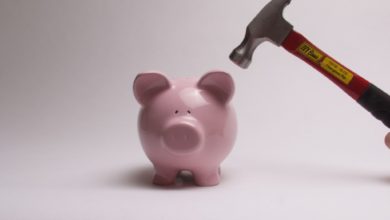Where Did We Land on Digital Wallets?

For years, smartphone makers and other companies have tried to establish a universal system that allows consumers to pay for items by simply tapping or waving their phone near a cash register as a digital wallet. The agreed-upon method (Apple finally came on board with the iPhone 6) uses a technology called Near Field Communications (NFC). NFC allows your smartphone to communicate with an establishment’s cash register via a small radio signal.
Sounds easy enough – yet while many people have come to rely on their phones for everything from getting directions to ordering pizza, mobile payment just hasn’t taken hold. There are several reasons for this.
Convenience
Taking pictures, listening to music, or looking up the fall of the Roman Empire are very easy to do on your phone. In fact, it’s easier to do those things (and more) on a phone than it was before smartphones came along.
When it comes to paying for things, though, a smartphone isn’t perceived to be easier than using cash or a debit card (not yet, anyway). Some people would argue that it’s actually more complicated.
Which to choose
Choosing a digital wallet is a lot harder than choosing, say, a weather app. If you don’t like your weather app, you just delete it and get a new one. If you don’t like your digital wallet app, the breakup is a little more involved. Not only do you have to disconnect the app from your bank account, you also have to find and learn how to use a new one.
Despite the lack of early enthusiasm from consumers, plenty of companies want you to carry their mobile wallet. They include:
- Apple Pay (via Passbook)
- Chirpify (social media via PayPal)
- Crinkle
- Dwolla (iOS and many merchants)
- Geode (not NFC)
- Google Wallet
- Lemon
- LevelUP
- LifeLock
- Loop
- payWave (Samsung and Visa)
- Softcard (A only)
- Square
- Venmo
Google Wallet only works with compatible devices and only over the Sprint network. Apple Pay only works with Apple (iOS). Lemon works on Android, iOS, and Windows Phone, making it one of the more versatile on the list. However, if you’re fiercely loyal to Apple or Google, you may want to stick with their apps.
Square, which has a partnership with coffee giant Starbucks, works with iOS and Android – but only with certain other merchants. Dwolla isn’t a digital wallet per se, but more of a consumer-friendly mobile payment system. Its advantage is that it’s widely accepted by merchants across the U.S. Softcard, which formerly had the unfortunate name of Isis, is also widely accepted – but it’s only available for the Android operating system.
Security
Perhaps the biggest concerns among consumers have to do with the overall security of digital wallets. Recent hacks of noted retailers like Target, Home Depot, Neiman Marcus, and Michaels have likely increased those concerns.
The good news is that if your credit card is tied to it, the same protections that cover your physical card extend to your digital wallet.
Chicken or the egg?
Digital wallets are suffering the same dilemma that other new technologies have faced: a lack of standardization. With a great number of digital wallet choices come a great number of competing technologies and systems, most of which are patented. While patents protect a company’s ideas and inventions, they can also thwart innovation.
NPR’s Planet Money podcast ran a wonderful segment on this. Titled “The Case against Patents,” the segment uses the example of innovation in early aviation to make its case.
The Wright Brothers had several patents related to flying machines, making it very difficult for anyone else to improve on their ideas. In France, however, there were no patent restrictions. This allowed the French to develop what is now the modern airplane. There are similar tales about the steam engine, radio, and television.
The other problem is getting retailers to invest in the technology that will allow them to accept mobile payments. It’s similar to the problem car manufacturers faced when they wanted to introduce cars that ran on ethanol. Gas stations didn’t want to provide ethanol, because very few cars could run on it. Consumers didn’t want ethanol-powered cars, because there was nowhere to refuel.
This seems to be the impasse for digital wallets. According to The New York Times, Japan has taken the approach to digital wallets that the French took with flying machines in the early 1900s: Japan’s largest phone carrier, NTT DoCoMo, opened up its payment system platform to everyone – including its competitors. As a result, one third of NTTDoCoMo users regularly use mobile payments.
Across the Sea of Japan, Korea Telecom joined up – making the system available in both countries. Merchants throughout Asia began to install the required systems to accept mobile payments.
The American way
In the U.S., smartphone makers, mobile carriers, and select merchants continue to enter into exclusive partnerships that ultimately limit the spread of digital wallets. Some are making the circle even smaller. Wendy’s, for example, last year announced the launch of an app that will let customers pay with their smartphones. Burger King plans something similar for 2015. McDonald’s is planning to enter the mobile payment space as well.
None of these efforts will gain traction unless everyone is on the same platform, and that seems unlikely. Going back to the car metaphor, this is akin to buying a Ford and only being able to use Ford gas to fuel it.
The problem in the mobile payment space comes down to one word: Apple. A full 41% of smartphone users use Apple’s iPhone. The company has been unwilling to share platforms with anybody, as evidenced by the recent antitrust suit over the iPod and Apple’s entire music technology system. This kind of firewall mentality (and Apple isn’t alone in this kind of thinking), will only hold back widespread consumer acceptance of mobile payments.
Research and insights for this article were provided by Check ‘n Go.




